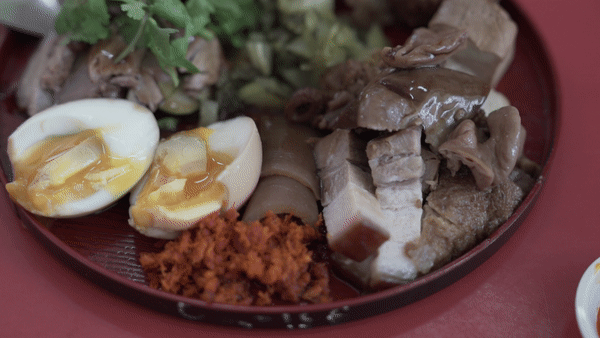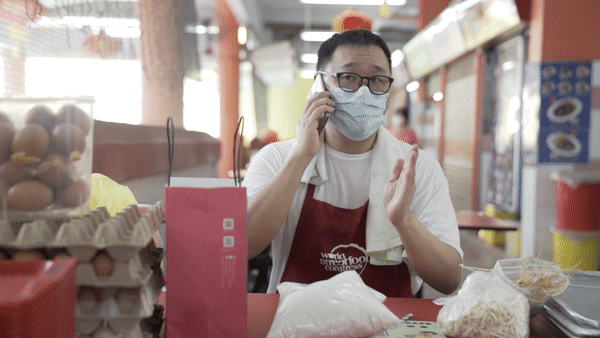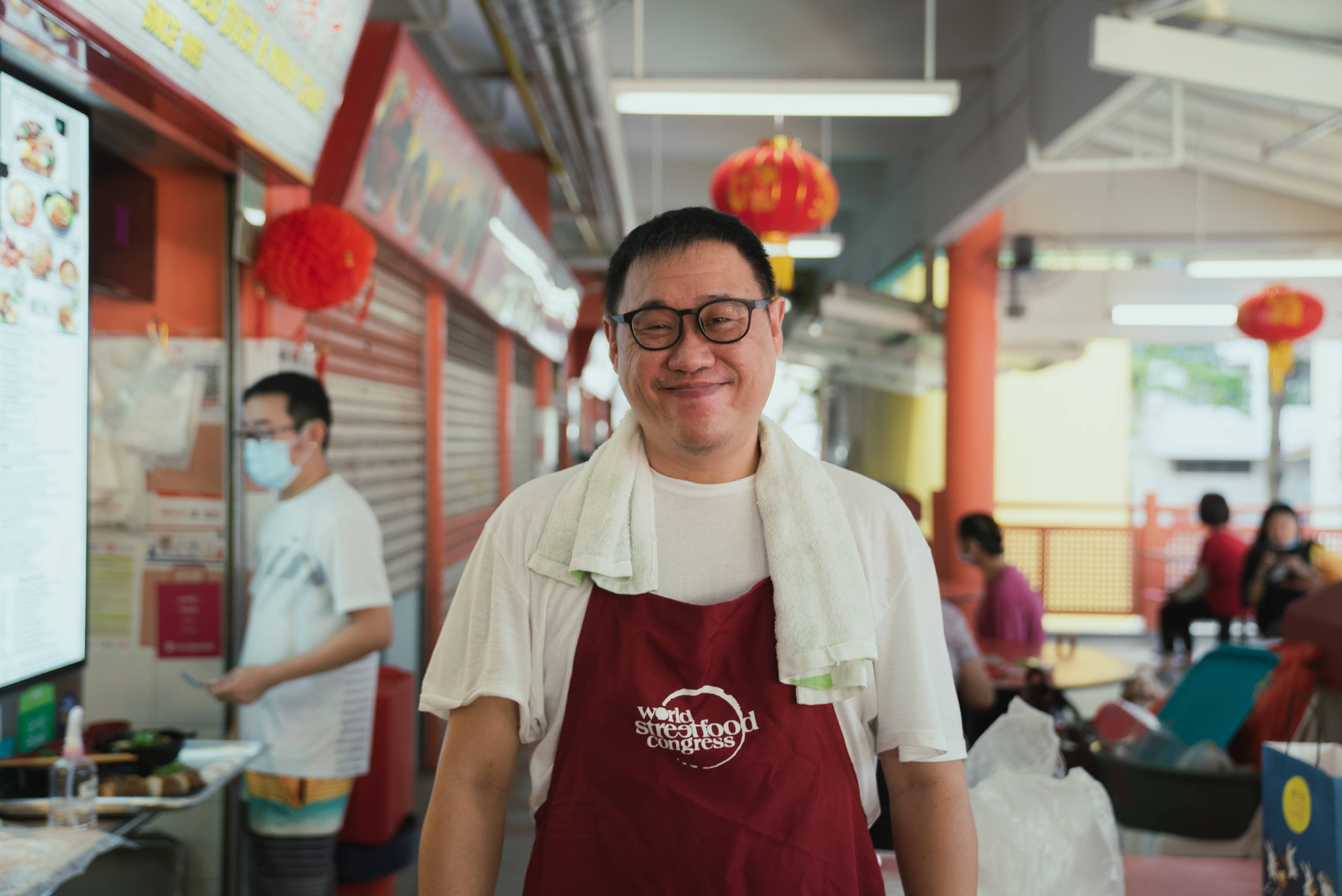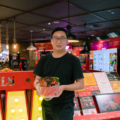Dating as far back as the 1800s, hawker culture in Singapore originated from the early migrant population selling quick, affordable meals along the streets or at makeshift stalls. Many centuries later, we now find hawkers under one roof at hawker centers and food courts.
Truly, hawker culture is at the heart of everyday life in Singapore, serving as gathering places for people from all walks of life. Here, people dine and bond. It’s a place where relationships are built and fortified. In fact, places like Chomp Chomp and Newton Circus Food Centre have become symbolic of our food paradise status—to both locals and tourists alike.

Jin Ji Braised Duck & Kway Chap (金记潮州卤鸭) opened its shutters in 1983. Now, it is owned by Melvin Chew, who picked up the baton of his parents’ business as a second-generation hawker. Younger Melvin started helping out at the stall when he was just 7 or 8 years old. His agenda? Clearing, keeping, and washing plates, amongst many other tasks.
In 2014, Melvin’s dad passed away due to a stroke. Knowing that his mom would have to let go of the shop without help, he resolved to take over the stall.
A labour of love
Braised Duck and Kway Chap are quintessentially Teochew. Braised in an old sauce, the duck is cooked in a concoction of fragrant herbs and spices, perfected by Melvin’s family recipe over the last 30 years.

As for kway chap, its key component is the spare parts of the pig. From skin to intestines, and more, all of these parts must be cleaned carefully. Every morning, cleaning and washing the organ parts comes first. Then, they are braised in a thick, dark soy sauce gravy consisting of meat stock and aromatic Chinese herbs.
For kway chap hawkers like Melvin, it means that he must begin the preparation process in the wee hours of the morning. His days start at 6 am, significantly earlier than most other stall owners.

Massive amounts of prep work go into creating a good Braised Duck and Kway Chap. As such, compared to other Singaporean dishes, stalls cooking up kway chap are much less common.
An infusion of new and old at Jin Ji
When he took over, Melvin wasn’t keen on just going along with status quo. Recognising that he needed to attract a younger crowd to keep the stall going, he introduced the idea of bento sets.
The Bento Jumbo Set ($8) is the most famous of Melvin’s creations. The dish features everything well-loved from his stall’s repertoire: Braised Duck, pig intestines, and beancurd. These are traditional kway chap ingredients that were carried over to the bento. As for the new, the bento sets feature yam rice balls. Plus, he uses Japanese-style Tamago eggs, with runny, lava-like yolks for a touch of Japanese flair.

Paired on the side is their home-made chilli hae bi hiam sauce, which gives it a perfect umami flavour! In all, the bento packs a punch when it comes to comfort food, but with a pleasant addition of uniqueness, too.
Nothing has changed about the essence of the food at Jin Ji. After all, the recipe has remained the same. Yet, by placing its traditional offerings into a Japanese bento box, the kway chap and braised duck take on a fresher, more appetising feel.
Circuit breaker woes
Jin Ji Braised Duck & Kway Chap is housed in Chinatown Food Center, which is located at the heart of the bustling Central Business District (CBD). In the past, come lunchtime, the hawker center would come alive with a buzz of Singapore’s hungry working crowd and a barrage of tourists.
Now, almost a year post-circuit breaker, it is still not the same. No more of your elbows banging into someone else’s, or scenes of people avoiding each other’s path with trays of food on hand. It’s clear that the hawker center hasn’t quite recovered from the aftereffects of the pandemic.
Hawkers United – Dabao 2020
Yet, in the thick of the pandemonium, Melvin rose to the task of making hawker culture known on social media. With this in mind, he created Hawkers United-Dabao 2020. The Facebook Group has more than 284,000 members to date. In the early days of the lockdown, the group was a way for Singaporeans to support hawkers that were delivering.

The act was pivotal. Melvin was fast-thinking and he did it alone with little tech-savviness or knowledge. Nevertheless, determined to not let the pandemic eat away at a heritage too precious to lose, and to protect the livelihoods of his fellow hawkers, he earnestly exhausted his options. All for keeping Singapore’s beloved hawker culture ablaze.
“We can’t sit there doing nothing lah. We need to do something, we need to be positive, then we can get results”,
Melvin Chew, second-generation owner of Jin Ji Braised Duck & Kway Chap
Melvin is candid in sharing why he initiated the idea of Hawkers United. Truth is, he was sleeping less than 4 hours a day during those times to upkeep the Facebook group.
The initiative was voluntary, and it is extra work on top of his already heavy workload. But, in December 2020, we all had something to celebrate as a cumulative result of the perseverance of Melvin and his peers.
On 16 December 2020, Hawker Culture in Singapore was successfully inscribed as our nation’s first element on the UNESCO Representative List of the Intangible Cultural of Humanity. In other words, our food courts, hawker centers, and the people who make it all work seamlessly are now to be safeguarded and protected.
Preserving hawker culture
Hawker culture is all about family, community, and Singapore culture. Under the single roof of the hawker center, you can feast on Chinese, Malay, Indian, and other cuisines.
Of course, the hawker center is also the place where culinary magic happens. It is a site where cultures meet in the middle, and blend and infuse into one another. Dishes become adapted to local tastes and contexts over time, becoming uniquely Singaporean cuisine.
As Melvin trudges on at his hawker stall, he’s a figurative reminder of this: if we can make a difference to preserve our hawker culture in our own small ways, let’s just do it! This is the only way that we can continue to enjoy hawker culture. The metal shutters of the stalls being rolled up and the noisy clattering of dishes. Not forgetting, the aroma of fragrant wok-hei and spices, the heat of boiling broth, and the sight of burning fiery woks.
It was our previous generations’ legacy. Now, it is Melvin’s, and all our present and future generations’ duty, to safeguard Singapore’s spirit of hawker culture.


